Trader made 200% profit in a month… so I found his strategy!
I saw a trader make more than 200% profit in a single month!
So I’m going to analyze his trades to find out his strategy.
I mean, even my neighbor’s dog wants to know how this trader made such a high profit in a single month.
This trader’s details were sent to me by one of you guys.
And it looks like the trader made more than 1000% profit in around 3-4 years!
So, this 200% profit in a single month was a part of that bigger profit.
But how did he do it? How did he make such a big profit in such a short time?
I was also sent some of his recent forex trades to analyze and find his strategy.
But when I plotted the trades on the chart, they looked like this!
What a mess!
These green boxes are the trades that made a profit, and the red boxes are the trades that made a loss.
But why are there a lot of trades inside one another?
What kind of strategy or trading style was he using? This looks like a big mess!
But when I went through the trades from the left, I saw something interesting.
Here, the price was moving strongly in the upward direction.
But he decided to sell!
Every single trade that was sent to me was taken in the opposite direction of the trend.
In other words, his strategy is a reversal trading strategy.
That’s the first thing we have figured out so far!
By looking at the first trade, we can say that he trades on smaller time frames because his entry and exit were pretty quick.
But since I only have the entry and exit price data, we don’t know where he had set the stop loss.
But in the next trade, he does something really weird.
You see, after winning the first trade, he sells another one when the price moves in the upward direction.
But this time the price doesn’t go in his entry direction.
So, one might think he is going to exit the trade at his stop loss soon, right?
No!
When the price goes in the upward direction against his entry, he takes another trade in the downward direction.
But when that trade doesn’t go immediately in his entry direction, he waits for the price to move even higher.
And then takes another short trade.
But then, the price kept moving higher against his entry direction.
So, he kept taking more and more short trades.
He has now taken around 10 trades in total in the same direction.
But here’s the thing: he has not closed even a single losing trade yet.
So he is not using a normal stop-loss strategy.
He is using some other risk management method.
But then, one of the trades actually made a profit when the price came down a little bit later.
So, it looks like he is setting a smaller fixed profit target but doesn’t use a fixed stop loss.
Now, since he has made more than 1000% profit in total, his loss management method is probably working for him.
Well, at least so far.
So, let’s see if we can find it.
But then, he does another strange thing.
After taking these 9 or 10 trades, he stops trading on this forex pair.
Like, there is a limit to how many trades he can open at the same time.
So, maybe he is not completely stupid and taking trades in the same direction infinitely, even though the price is clearly moving in the opposite direction.
Maybe he has a rule of limiting his risk to around 10 similar open trades at the same time.
By the way, looking at his trade history, his account size is around $1000 to $2000.
And he is taking very small position sizes on each trade.
In other words, his risk on each trade is really really small.
He is definitely using high leverage to take multiple trades at the same time.
But the risk on each trade is still relatively low.
Like, even when the price moved strongly in the opposite direction, his unrealized loss on each trade was only around 1% of the account.
In other words, it looks like his idea is to take a lot of trades with a really small percent of the account, so that there will be low risk in total.
Since he is not infinitely taking the same trades, his loss is limited to a certain amount.
Maybe he will close all the trades when the total loss reaches 10% of the account, for example.
The price will need to make a big move in the opposite direction for that to happen.
But then, he does another weird thing.
Even though he has around 9 trades running at a loss, he starts taking even more trades a few days later.
Like, he went on a break and then decided to sell again.
But, interestingly, this time he wins, like almost every short trade he takes!
The price finally starts moving in the downward direction.
But here’s something interesting.
He took short trades every time the price moved up.
He never took short trades when the price was lower than the previous entry price.
Just like that, he only booked a profit every time the price moved in the downward direction.
He never booked a profit when the price was higher than the previous profit-booking price.
Furthermore, he doesn’t book a profit on all the trades at the same time.
Instead, he books profit on trades one by one, or in a small batch.
But not only that, once the price started moving in the downward direction, he also started booking losses one by one on the old trades he still had running.
So, when the price came down a little bit, he had exited all his trades, some in profit and some in loss.
But overall, he made a profit!
Then, a few days later, he does the same thing when the price starts moving up.
He started taking short trades again.
But he also started to spam trades at pretty much the same place.
This time, only one of his trades lost money because the price started moving in the entry direction pretty quickly after his entry.
Somehow, in all this mess, he didn’t lose money in total.
But then, what in the world did he trade? What was his strategy?
Before, we noted that he trades reversals, uses a smaller entry timeframe, and doesn’t set a stop loss.
He uses a different kind of risk management and exit strategy.
So, to find out what it is, I did some analysis and looked at different things.
But then, I noticed an interesting pattern.
When I put horizontal lines on his entry and exit points, I saw the strategy.
You see, the distance between the entry and profit of the first trade and the distance between the first and second entry were pretty much the same.
But when the price made a strong move in the upward direction, the gap increased.
But when the price started to slow down, the distance between the next entries also started to become smaller and smaller.
And when the price started to move strongly in the upward direction again, the distance between the horizontal lines, or entries, also started to increase.
But here’s something even more interesting.
You see, when he started booking profits, he exited all the trades on one of these same horizontal lines!
From everything I have learned in my around 8 years of trading journey, when a trader takes trades an equal distance away from the previous trades,
And then exits on pretty much the same price levels as the previous entry or exit points,
Then that trader is pretty much trading the Grid Trading Strategy.
If you don’t know what that is, let’s take his own example.
Here, when the price moved in the upward direction, since he is a reversal trader, his plan is to sell.
So, what he does is create horizontal lines, or grids, at an equal distance from one another.
When the price moves up towards this line, he sells.
And when the price moves down towards the line below, he buys.
Since he had already sold before, the next buy position books a profit.
But then, since he is only looking to sell in this uptrend, when the price moves again to a higher level of the grid, he creates another sell position.
And when the price moves to another higher grid level, he sells again.
He keeps repeating this selling pattern until he reaches his risk limit, like around 10 open trades at a time.
But when the price finally starts moving in the downward direction, and reaches a lower grid level, his goal is to buy.
It doesn’t matter if the running trades are in profit or loss. He has to buy.
If the running trades are in a profit at this point, then he will book a profit.
If they are in a loss, then he will book a loss.
But there is one thing different about his grid strategy.
He adjusts his grid distance based on how fast the price is moving.
If the price is moving too fast up or down, then he uses wider grid levels.
If the price is moving slowly, then he uses narrow grid levels.
So, now we know something important about his strategy.
He only takes reversal trades.
He only trades on smaller timeframes.
He doesn’t use a normal stoploss.
He sells when the price touches higher grid levels.
He buys when the price touches lower grid levels.
But he adjusts his grid distance based on how fast the price is moving up or down.
He probably stops taking more trades if he already has around 10 trades running at the same time in the same direction.
He takes trades with small position sizes so that even if the price goes strongly in the opposite direction, his total loss will be relatively small.
He probably closes all trades when the total loss becomes too high, like around 10% of the account.
The grid trading system makes him buy and sell frequently, reducing the probability of keeping the trades open forever if the price moves in the opposite direction.
But in this trading system, it is very important for the price to make up-down, up-down, wave-like patterns.
But with his adjusting grid trading system, he takes more trades when the wave-like pattern happens more often.
An example of that is a range market.
That’s how he made 1000% profit in 3-4 years!
And when he made 200% profit in a single month, the price was probably ranging most of the time.
Now that we know how this guy made around 1000% profit, I am going to test this grid trading and his adjusting grid trading strategy in one of the future Trading Rush videos.
So, we can know its win rate and other long-term useful data that will help us decide if we should use this strategy in our own trading or not.
Even though this guy has made a 1000% profit with it, maybe there are some long-term hidden risks.
So, we need to test it.
Subscribe if you want to see that.
Thanks for watching!

